An in-silico study examining the induction of apoptosis by Cryptotanshinone in metastatic melanoma cell lines
- PMID: 30157799
- PMCID: PMC6116360
- DOI: 10.1186/s12885-018-4756-0
An in-silico study examining the induction of apoptosis by Cryptotanshinone in metastatic melanoma cell lines
Abstract
Background: Metastatic melanoma is an aggressive form of skin cancer that evades various anti-cancer treatments including surgery, radio-,immuno- and chemo-therapy. TRAIL-induced apoptosis is a desirable method to treat melanoma since, unlike other treatments, it does not harm non-cancerous cells. The pro-inflammatory response to melanoma by nF κB and STAT3 pathways makes the cancer cells resist TRAIL-induced apoptosis. We show that due to to its dual action on DR5, a death receptor for TRAIL and on STAT3, Cryptotanshinone can be used to increase sensitivity to TRAIL.
Methods: The development of chemoresistance and invasive properties in melanoma cells involves several biological pathways. The key components of these pathways are represented as a Boolean network with multiple inputs and multiple outputs.
Results: The possible mutations in genes that can lead to cancer are captured by faults in the combinatorial circuit and the model is used to theoretically predict the effectiveness of Cryptotanshinone for inducing apoptosis in melanoma cell lines. This prediction is experimentally validated by showing that Cryptotanshinone can cause enhanced cell death in A375 melanoma cells.
Conclusion: The results presented in this paper facilitate a better understanding of melanoma drug resistance. Furthermore, this framework can be used to detect additional drug intervention points in the pathway that could amplify the action of Cryptotanshinone.
Keywords: Boolean networks; Cryptotanshinone; Melanoma; Stat3; Trail.
Conflict of interest statement
Ethics approval and consent to participate
Not applicable.
Consent for publication
Not applicable.
Competing interests
The authors declare that they have no competing interests.
Publisher’s Note
Springer Nature remains neutral with regard to jurisdictional claims in published maps and institutional affiliations.
Figures


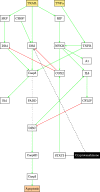
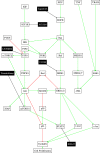
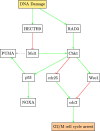
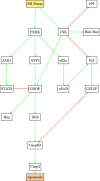

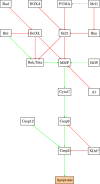


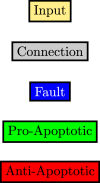








References
-
- Zhang XD, Wu JJ, Gillespie S, Borrow J, Hersey P. Cross resistance of melanoma to trail-induced apoptosis and chemotherapy. Update Cancer Ther. 2006;1(4):435–41. doi: 10.1016/j.uct.2006.08.004. - DOI
MeSH terms
Substances
Grants and funding
LinkOut - more resources
Full Text Sources
Other Literature Sources
Miscellaneous

